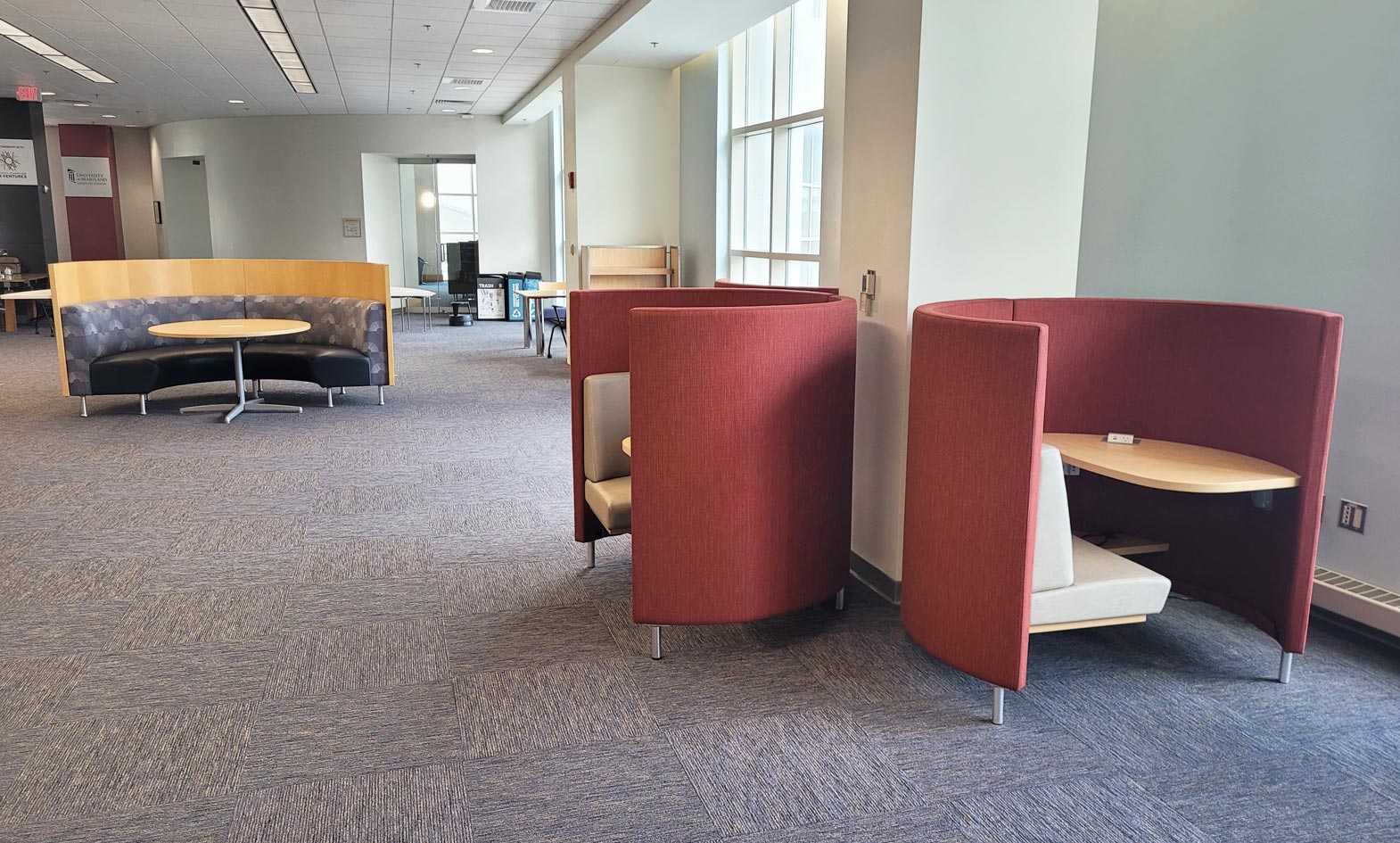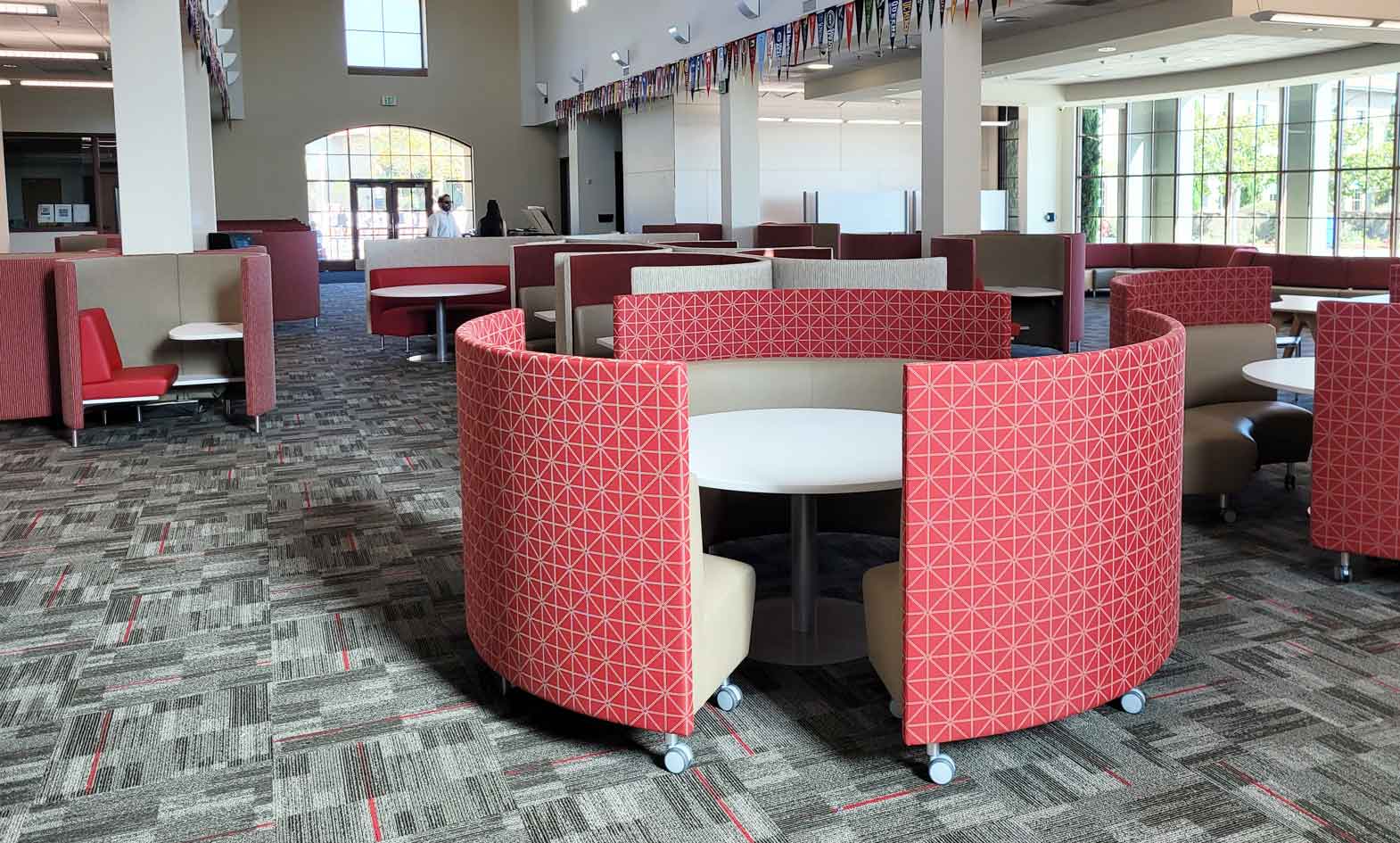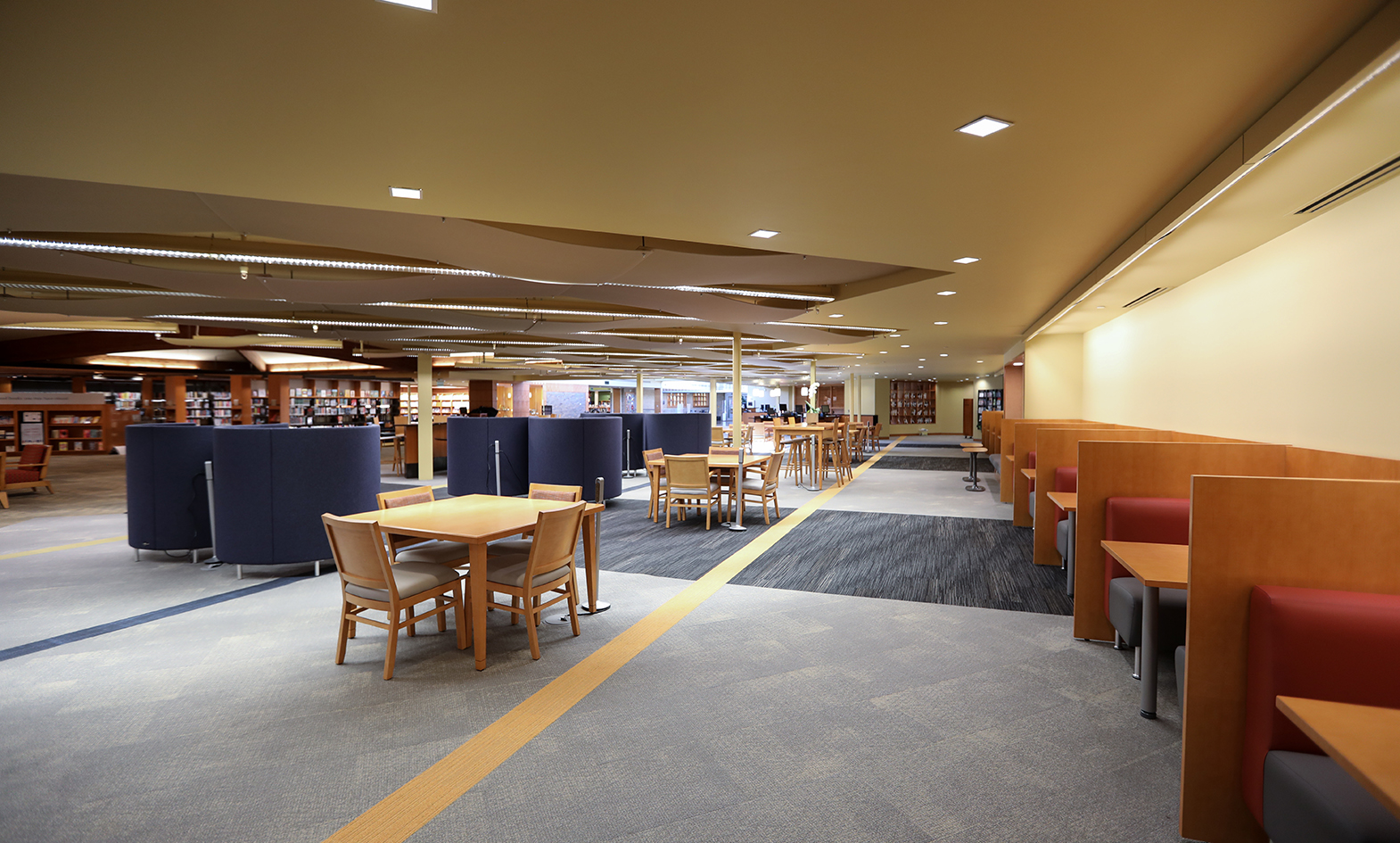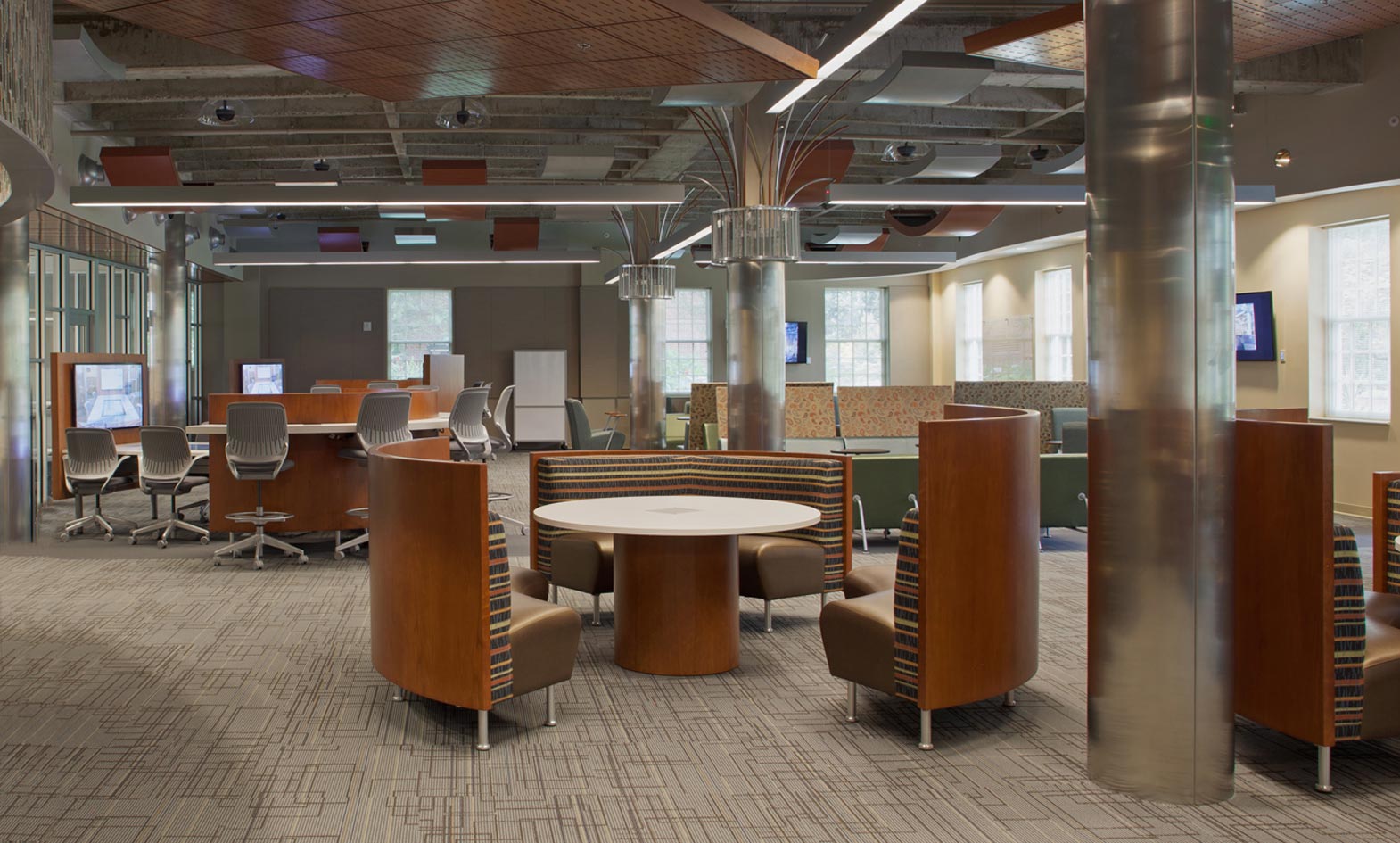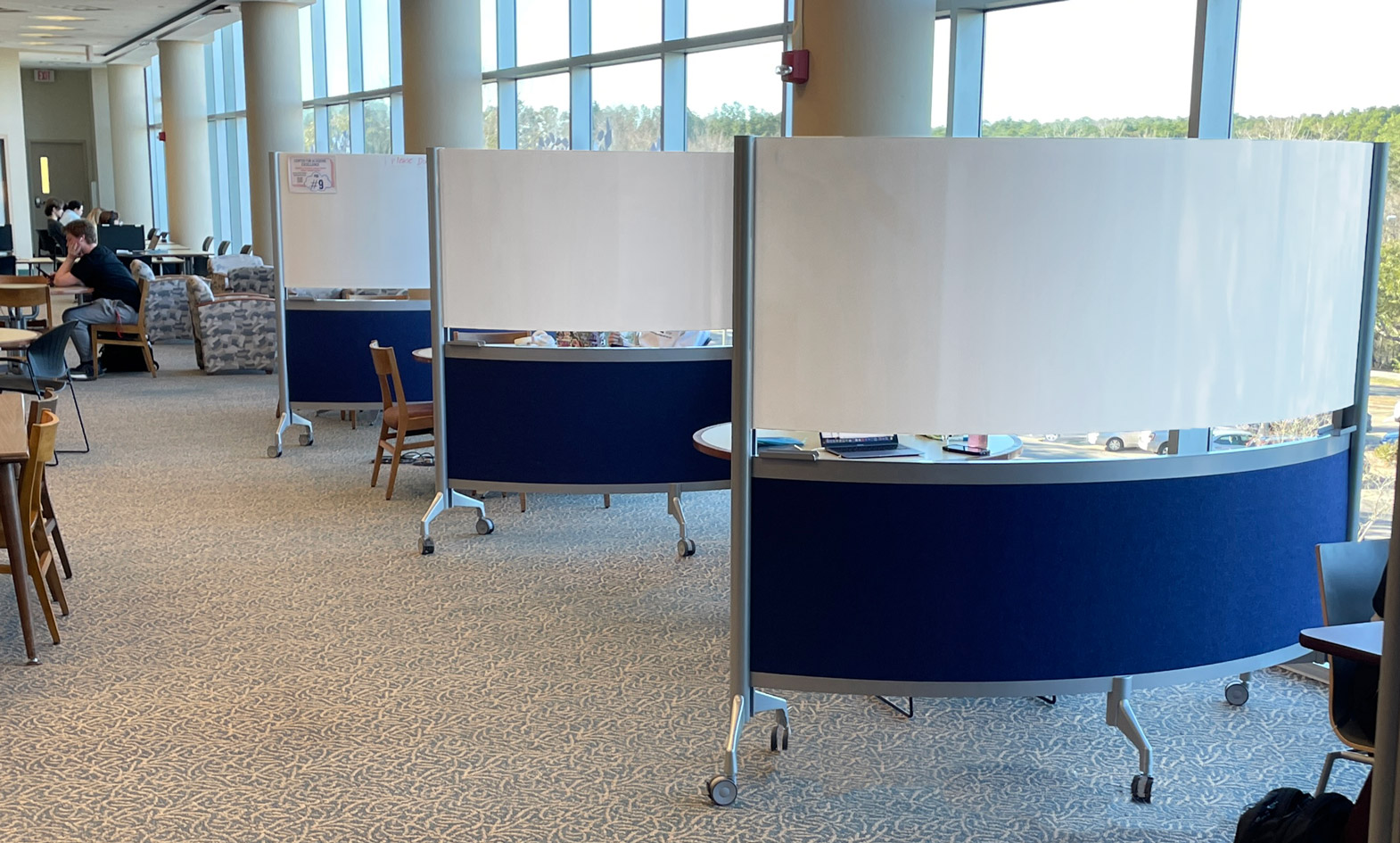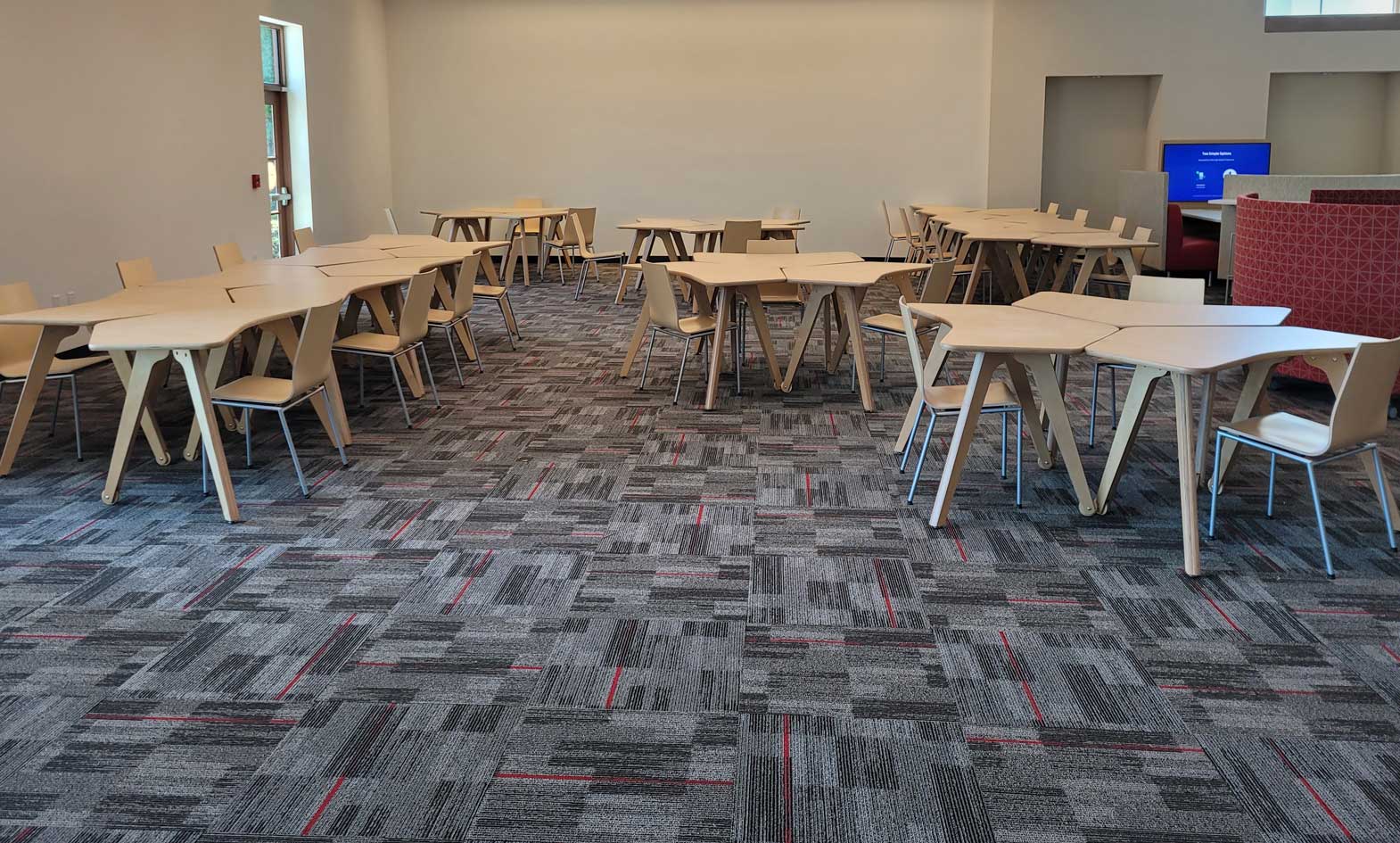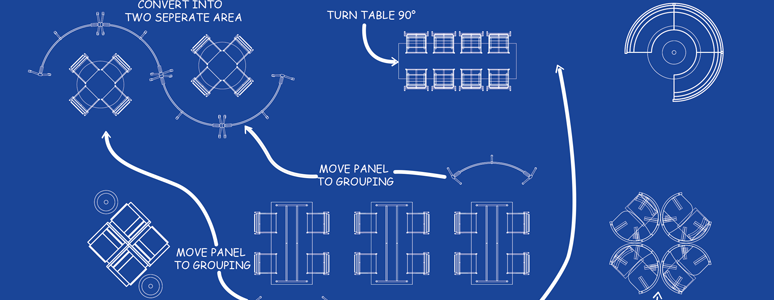
Does your space need to be flexible or mobile? And what’s the difference?
This is a question we often walk through with our clients at the beginning of a new project that has the goal of flexibility and adaptability. It’s important to know how often a space will need to be rearranged before we jump straight to the solution of adding wheels to all the furniture in a space.
Most importantly: Furniture decisions should directly support the goals for what you want to accomplish in the environment created.
Flexible and Mobile Defined
Let’s make sure we define our terms:
- A flexible space is another phrase for long-term flexibility. Flexible spaces utilize products that can be easily moved or rearranged on a weekly or monthly basis.
- A mobile space (or short-term flexibility) is made of products that will tend to utilize wheels as it needs to be arranged daily or even multiple times a day. Unlike a flexible space, where furniture is typically moved by staff, a mobile space is designed to be changed by the user as well.
In many spaces, you may find value in both of these furniture types, and it’s a valuable recognition that furniture does not have to be mobile to be considered flexible.
This all comes down to your goals. Particularly, when considering adaptability, determining how often furniture should be moved and who should be allowed to move it will be immensely valuable in your furniture procurement process.
Let’s look at each type of furniture in detail:
Flexible Furniture
While flexible furniture tends to be stationary most of the time, staff can still configure and reconfigure it to meet the ever-evolving needs of your space. For instance, you may use something like the Elements Media Station to generate a free-standing meeting room that can shift locations whenever needed based on the needs of the space.
Our POD collection is another great example of flexible furniture that is semi-permanent in nature. By having the panels, seat, and power integrated directly, the POD can be arranged to fit in with other furniture solutions or configured creatively as a freestanding installment. Whenever needed, the product can be moved, but doesn’t communicate mobility to users to keep a space’s primary purpose intact.
As you are determining the vision of your flexible space, consider:
- Will weekly or monthly adjustments fulfill the flexibility you need to support your users well?
- Is your space structured in a way that makes it feel permanent to users?
- Are you investing in furniture that can be moved easily by staff?
Mobile Furniture
Mobile furniture offers short-term flexibility for a space to give groups of people privacy or individual users a space to make their own. This could include solutions like the FrameWork mobile whiteboard that has endless configurations or our Adapt workstations that can be either freestanding or part of a larger configuration. Mobile furniture can include stationary pieces that offer multiple uses depending on the user’s needs that day.
When considering mobile furniture, it’s important to identify all the different functions you are hoping to offer users. What does the furniture provided need to do?
Then consider:
- Can pieces of mobile furniture meet multiple or all of your intended functions?
- Should it be easy for the user to understand how to move and configure the furniture to meet their needs?
- Does it add to the experience of this space for the environment to be shifting every day?
- Should the entire space be mobile or just sections of it?
Developing a Hybrid Space
More often than not, your space will be a hybrid of these options. You are not bound to offer just one option. Utilizing a variety of versatile furniture will allow for both you and your users to adapt furniture to use in the best way possible for the present need.
Looking for even more creative flexible and mobile furniture options? Check out our full breakdown of flexible furniture >>
